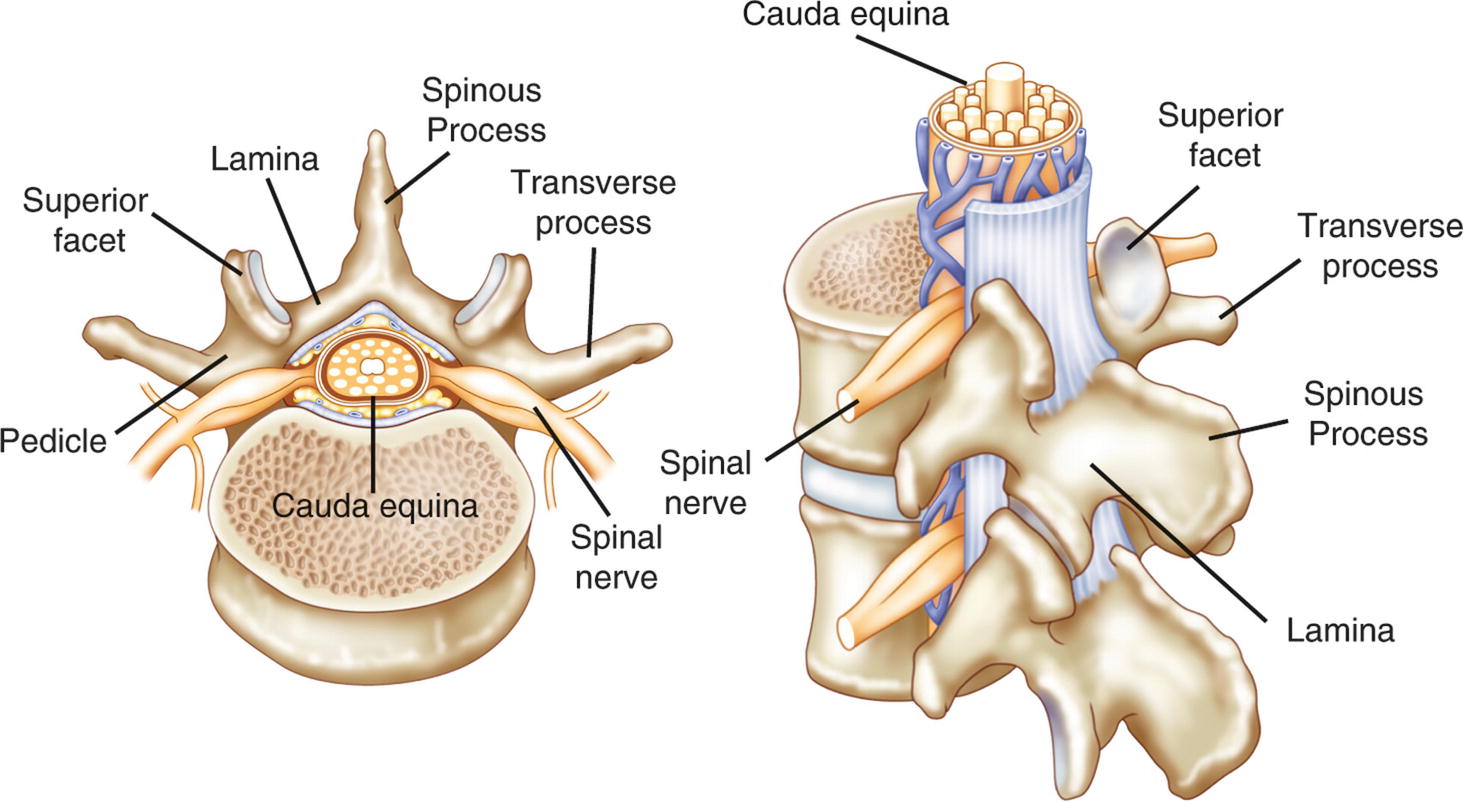
One of these loci eventually develops into the vertebral body while the other two develop into one half of the eventual vertebral arch. One dorsal and one ventral primary ossification centre forms for each vertebral body these unite to create a centrum, which develops into three primary loci at the conclusion of embryonic development. b : Ossification of subaxial cervical, thoracic and lumbar vertebrae: This follows chondrification and typically occurs after 9 weeks of gestation. The six stages of vertebral development include: (1) gastrulation and formation of the somitic mesoderm and notochord, (2) condensation of the somitic mesoderm into somites, (3) formation of dermomyotomes and sclerotomes, (4) formation of membranous somites and re-segmentation with definitive vertebral formation, (5) vertebral chondrification and (6) vertebral ossification. The notochord expands and develops into the nucleus pulposus of intervertebral disks. Chondrification centres appear during the 6th week of development within a mesenchymal template, which enclose the notochord and developing neural tube. The sclerotomes migrate around the neural tube and the notochord forming the vertebral bodies, arches, transverse and spinous processes.

It is difficult to separate discussion of the spine from that of the enclosed spinal cord, so associated spinal cord/brain anomalies will be mentioned where applicable but will not be elaborated.Ī- d: Embryology of vertebral bodies and intervertebral discs: Illustration (1–6) demonstrating the steps in development of vertebral bodies from sclerotomes. This article overviews the embryology of the vertebral column and imaging appearance and clinical impact of the spectrum of abnormalities arising as a consequence of disordered development. Developmental defects of cardiovascular, neurological, urinary and reproductive systems may be associated. When symptomatic, these abnormalities can predispose the affected individual to biomechanical instability, spinal canal narrowing and myelopathy and can even be life-threatening. These may occur sporadically, in isolation or as an accompaniment to multiorgan developmental malformations. Occasionally, these may be complex with serious structural or neurological implications. Structural malformations of the spine are often simple and may either go undetected or be discovered fortuitously. Any disruption of this normal sequence of events can lead to variations in the structural anatomy of the spine and spinal cord. The vertebral column and spinal cord develop early in gestation in a fine-tuned, sequential manner. Accurate interpretation requires knowledge of normal, variant and abnormal vertebral morphology.Abnormalities in spinal cord development may be associated and must be searched for.On imaging, malformed vertebrae can be indistinguishable from acute trauma.Some vertebral malformations predispose the affected individual to trauma or myelopathy.This review article seeks to familiarize the reader with the embryology, normal and variant anatomy of the vertebral column and the imaging appearance and clinical impact of the spectrum of vertebral malformations arising as a consequence of disordered embryological development. This knowledge will improve diagnostic confidence in acute situations and confounding clinical scenarios. Accurate imaging interpretation of vertebral malformations requires knowledge of ageappropriate normal, variant and abnormal vertebral morphology and the clinical implications of each entity.

These anomalies can occasionally mimic acute trauma (bipartite atlas versus Jefferson fracture, butterfly vertebra versus burst fracture), or predispose the affected individual to myelopathy. Malformations can be simple with little or no clinical consequence, or complex with serious structural and neurologic implications. Malformed vertebrae can arise secondary to errors of vertebral formation, fusion and/or segmentation and developmental variation. A variety of structural developmental anomalies affect the vertebral column.


 0 kommentar(er)
0 kommentar(er)
